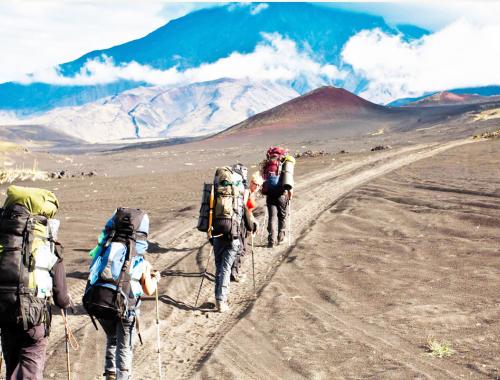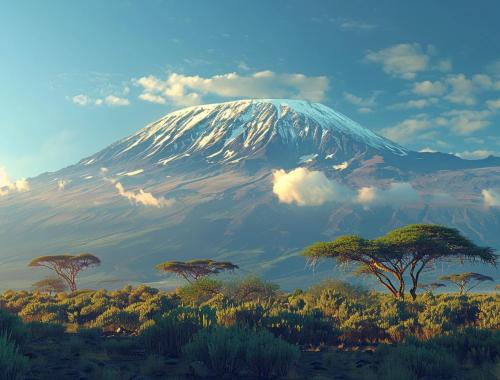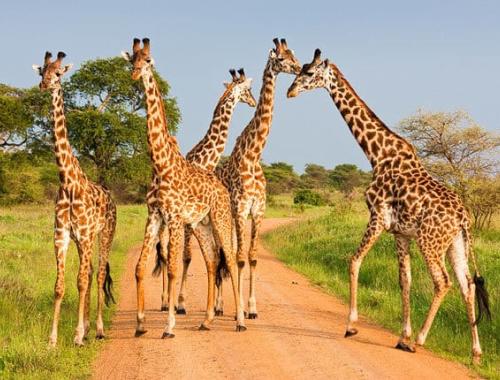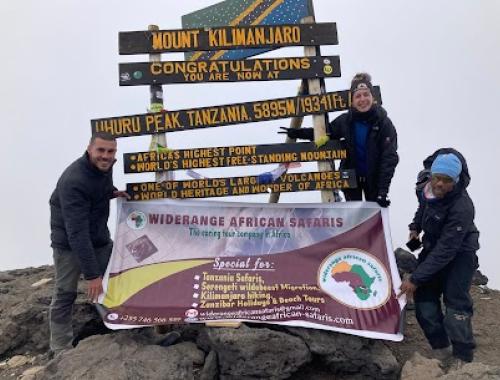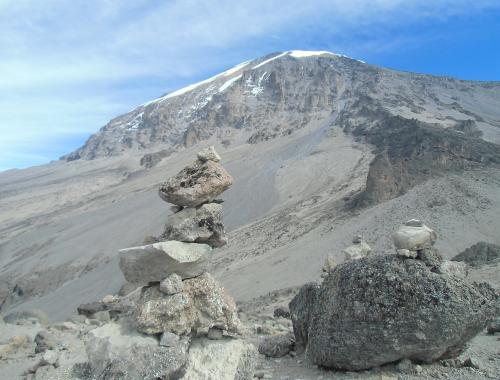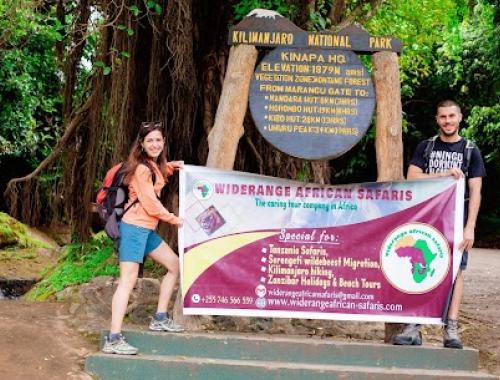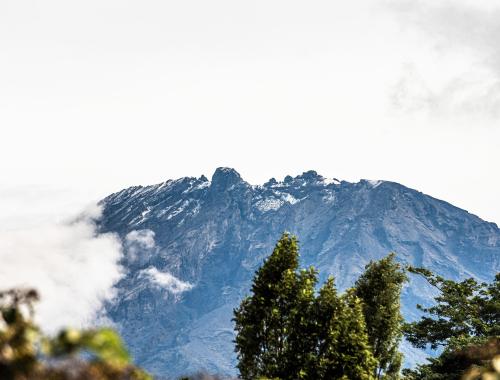Hiking
Hiking is a great way to explore the beauty of nature. In Tanzania, hiking allows you to walk through forests, climb mountains, cross rivers, and see wild animals and birds up close. It is one of the best activities for people who love the outdoors, adventure, and peaceful natural places.
What is Hiking?
Hiking means walking in natural areas for fun and exercise. It is different from walking in towns or on roads. When you hike, you walk on trails (paths) in the wild—through forests, hills, mountains, or savannahs.
Some hikes are short and easy. Others are long and take many hours or even days. Hiking helps your body stay strong and lets your mind relax. It also helps you connect with nature in a special way.
Why Hike in Tanzania?
Tanzania is one of the best places in Africa to go hiking. It has:
-
Beautiful Landscapes – Mountains, forests, waterfalls, rivers, and wide open grasslands.
-
Many National Parks – Full of wild animals, birds, and untouched nature.
-
Friendly Guides – Trained to lead visitors safely and explain about plants and animals.
-
Good Weather – Most of the year is sunny and clear, especially in the dry season.
-
Great Variety – You can hike in mountains, forests, volcanoes, and savannahs all in one country.
Hiking in Tanzania is a fun, safe, and exciting activity for people of all ages.
Best National Parks for Hiking in Tanzania
Many national parks in Tanzania offer hiking experiences. Some of these are:
1. Mount Kilimanjaro National Park
This is home to Mount Kilimanjaro, the tallest mountain in Africa. Hiking here is a dream for many people around the world. You can:
-
Do short day hikes around the lower slopes.
-
Or climb to the top (Uhuru Peak) on a 5–9 day hike.
-
See different zones—forest, moorland, alpine desert, and snow at the top!
2. Mount Meru in Arusha National Park
Mount Meru is Tanzania’s second-highest mountain. It is not as tall as Kilimanjaro, but still a challenge. It takes 3–4 days to hike to the summit. On the way, you may see giraffes, monkeys, and birds.
3. Udzungwa Mountains National Park
This park is famous for its forests and waterfalls. It has many hiking trails, from short walks to full-day hikes. You can hike to the Sanje Waterfall, which is 170 meters high! It’s also home to unique monkeys and birds.
4. Ngorongoro Conservation Area
Here you can hike along the Ngorongoro Crater rim, or walk into the Empakaai Crater. You will see amazing views, and possibly animals like buffaloes, zebras, and flamingos in the crater lakes.
5. Mahale Mountains National Park
This park is by Lake Tanganyika. You can hike into the mountains to track chimpanzees. The forest is green and full of birds, monkeys, and butterflies.
6. Gombe National Park
This is another park for chimpanzee trekking. You hike in forest paths while looking for these smart and playful animals. This park became famous through the work of Dr. Jane Goodall.
Types of Hiking in Tanzania
You can choose different types of hiking depending on your time, interest, and fitness level:
1. Short Nature Walks (1–3 hours)
-
Easy trails for beginners or families.
-
Walk near lodges or camps.
-
Good for birdwatching and seeing plants.
2. Half-Day or Full-Day Hikes
-
Walk deeper into the forest or savannah.
-
See waterfalls, rivers, or animals.
-
Guides usually carry food and water.
3. Multi-Day Hikes
-
Trek for several days and sleep in tents or huts.
-
Common for Kilimanjaro, Meru, or Mahale hikes.
-
These hikes need planning and fitness.
What You Will See While Hiking
Hiking is not only about walking—it is also about seeing, hearing, and feeling nature. You may see:
-
Animals: giraffes, zebras, monkeys, elephants, and antelopes.
-
Birds: colorful birds singing in the trees.
-
Trees and Flowers: many green plants and forest smells.
-
Waterfalls and Rivers: cool, fresh places to rest.
-
Sunrise or Sunset: amazing views from hills or mountains.
Every hike is different and exciting.
What to Bring When Hiking
Here are important things to carry when hiking:
-
Good walking shoes or boots
-
Hat and sunglasses
-
Water bottle
-
Snacks or packed lunch
-
Rain jacket (weather can change)
-
Walking stick (optional but helpful)
-
Small backpack
-
Camera or binoculars
-
Sunscreen and insect repellent
For long hikes, your guide will advise what to pack and may carry supplies.
Importance of a Guide
In most parks, hiking must be done with a guide or ranger. The guide:
-
Knows the trail and directions
-
Helps you see animals or birds
-
Tells you about trees and culture
-
Keeps you safe from danger
-
Helps if someone is tired or sick
Guides are kind, trained, and love to share their knowledge. They make the hike more interesting.
Safety Tips for Hiking
Hiking in national parks is safe, but you must follow rules:
-
Never walk alone
-
Always follow your guide
-
Wear strong shoes and dress properly
-
Carry enough water
-
Respect wild animals—never get too close
-
Stay on the trail—do not get lost
-
Tell someone your plan before hiking
If you feel tired, sick, or lost, tell your guide immediately.
Best Time for Hiking
The best time for hiking is the dry season, which runs from June to October. During this time:
-
Trails are dry and easy to walk on
-
There are fewer insects
-
Skies are clear for views and photos
Hiking in the rainy season (March to May) is harder because of slippery trails and thick vegetation. But the forest looks greener and the waterfalls are stronger.
Hiking and Culture
Some hikes in Tanzania include cultural experiences. You may:
-
Visit a local village and learn how people live
-
Walk with Maasai warriors who tell stories and show plants used as medicine
-
Eat local food or dance with a community group
These cultural hikes help you learn about the people who live near the parks. It also supports their communities.
Hiking and Conservation
When you hike in national parks, you help protect the environment. Entrance fees and guide payments go toward:
-
Wildlife protection
-
Park management
-
Ranger salaries
-
Community development
Also, hiking uses fewer resources than cars or lodges. It is eco-friendly and causes less harm to nature.
Hiking for Health
Hiking is very good for your health:
-
It gives you exercise for your heart, legs, and muscles
-
It helps you relax and reduce stress
-
It clears your mind and improves mental health
-
It teaches patience and focus
-
It connects you with fresh air and nature sounds
Even short walks have big health benefits.
Tips for a Great Hike
Here are some extra tips to make your hike fun:
-
Start early to avoid heat and see animals
-
Walk slowly and enjoy the view
-
Take breaks and drink water often
-
Wear bright colors so your group sees you
-
Be quiet—animals get scared of loud noise
-
Take photos, but don’t disturb nature
-
Leave nothing behind—no trash
Cost of Hiking
The cost depends on:
-
Park entrance fee (each park has a price per person)
-
Guide fee (shared if in a group)
-
Equipment (shoes, walking sticks, rain gear)
-
Transport to and from trailhead
-
Snacks or meals for longer hikes
Hiking in Tanzania’s national parks is a beautiful and peaceful way to explore Africa’s natural wonders. You don’t need to be an expert or have expensive gear—just bring good shoes, a curious heart, and respect for nature.
From tall mountains like Kilimanjaro to deep craters, forest trails, and chimpanzee paths, every hike offers something new and unforgettable. Whether it’s a quiet walk through trees or a challenging climb to the top of a peak, hiking in Tanzania is a journey your mind and body will always remember.

